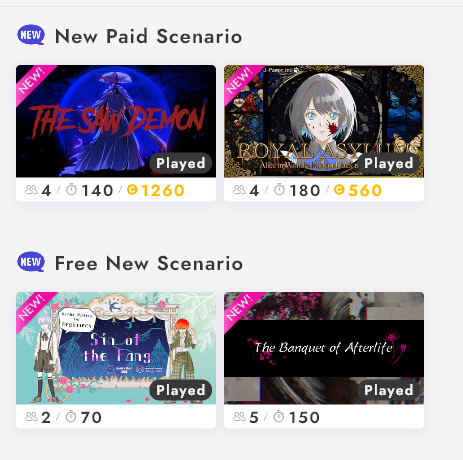The Anatomy of Murder Mystery: How to Craft Interactive Immersion
- Mister RI
- Feb 14, 2024
- 3 min read
After delving into numerous murder mystery games, particularly those from earlier eras, I've noticed a recurring pattern—a basic vanilla game structure that underpins many of these experiences.
In today's discussion, I'd like to take a stroll through this structure, exploring how it's employed and ways in which it can be enhanced to create more compelling gameplay.
Script: The script typically comprises of only several pages, including essential information, character backgrounds, personal objectives, and secrets to safeguard. Following this is a recap of preceding events, often presented as a detailed timeline.
Game Structure: Typically, murder mystery games are divided into two halves:
Investigation Phase
Discussion Phase (Interlude)
A second Investigation Phase
Final Discussion Phase
Voting for the culprit.
Enhancing Gameplay with the Script: One of the distinctive features of murder mystery games is that the timeline is viewed from the perspective of your character. This grants the designers a range of deceptive tools, such as the use of unreliable narrators and strategic omission of information. Taking the script at face value will often lead players astray with incomplete information and premature assumptions.
At 2am, you hid in your room and hear foot steps from the left of the hallway walking to the right.
You noticed that one of the characters have muddy boots, the other's cloths was drenched.
This gives you a direction to start your conversation, but you will have to interact with the other players to get the full infomation.
Tips for Prompting Effective Interactions:
Provide partial information to players, encouraging interaction and collaboration to piece together the full picture.
Create initial suspicion by introducing multiple red herrings, such as characters with muddy boots or drenched clothing.
When both characters have solid alibis prepared, the intricacies of the game structure come into play, injecting a sense of suspense and challenge into the narrative.
Providing Ammo In A Duel of Words:
The investigation phase serves as the rice of the gameplay, this phase often employs a mechanic of limited investigation actions, meaning that individual players will not possess all the information necessary to definitively identify the culprit.
Furthermore, most games provide players with the option to keep their discoveries hidden, fostering an atmosphere of secrecy and encouraging private discussions among participants as they exchange information and theories.
To ensure a captivating buildup to the second half of the game, there are two effective approaches.
One method involves restricting the order in which clues are obtained, compelling players to uncover them sequentially. By design, this approach ensures that the clues become progressively more revealing and consequential as the investigation unfolds. Clues discovered in the second half of the game may carry greater significance, challenging players' assumptions and reshaping their understanding of the mystery.
Alternatively, the second approach introduces a fresh set of clues or information in the second half of the game, previously inaccessible or unrevealed to the players. Rather than simply escalating the intensity of the infomation provided, personally I enjoy it more when these additional details serve to alter players' perspectives on their previous infomation. This twist ensures that the initial phase of the game is not merely a preamble but an integral part of the narrative progression.
Both approaches can be combined and iterated upon to create dynamic and engaging gameplay experiences.
Tips for Building and Effective Climax:
Use limited investigation actions to prompt players to prioritize their inquiries and promote private discussions.
Build anticipation for the second half by restricting the order in which clues are revealed or introducing new information that reshapes players' perspectives on previous discoveries.
In this post, I've explored the mechanical design of the game structure, laying the groundwork for future discussions on thematic explanations and unique twists within the genre. Stay tuned for upcoming insights into the intricacies of murder mystery storytelling!
Whenever you're ready, there are 3 ways I can help you:
Sign up for email newsletter to get these insights and new games releases

![[Beast of the Black Forest] A Chilling English Jubensha Experience](https://static.wixstatic.com/media/b3a0ad_8b74248f727c4369994331dff965ed24~mv2.png/v1/fill/w_980,h_1371,al_c,q_90,usm_0.66_1.00_0.01,enc_avif,quality_auto/b3a0ad_8b74248f727c4369994331dff965ed24~mv2.png)

Comments